Knowing how to choose a mattress is certainly the biggest factor that can make sleepers hesitate before making a new mattress purchase.
A new mattress is an investment that will last for years and considering you spend 1/3 of your life on it, it makes sense to make sure you’re picking the best mattress for your needs.
Here’s a quick rundown of questions to ask when choosing a new mattress.
- What type of mattress do I need?
- How old is your mattress?
- What is your budget?
- What position do you sleep in?
- How much do you weigh?
- What firmness do you need?
Click here to jump right to the highlights at the end!
How do I know which mattress is right for me?
When shopping for a new mattress this is probably the first question you may be asking yourself. There are many different types of mattresses on the market and it can be hard to distinguish the differences.
The four main types of mattresses include:
- Foam
- Hybrids
- Coil-on-Coil / Innerspring
- Specialty
Types of Foam Mattresses
Within the foam category, there are 4 major sub-types, including:
- Combo Foam
- Memory Foam
- Latex Foam
- Poly Foam
Combo Foam
Combo foam includes a huge range of mattress types, but at its core, all of these mattresses have a layer or layers of comfort foam and a base of higher-density support foam.

Some mattress designs also include transitional support foam layers, which are generally poly foam (but can be latex or specialty memory foam).
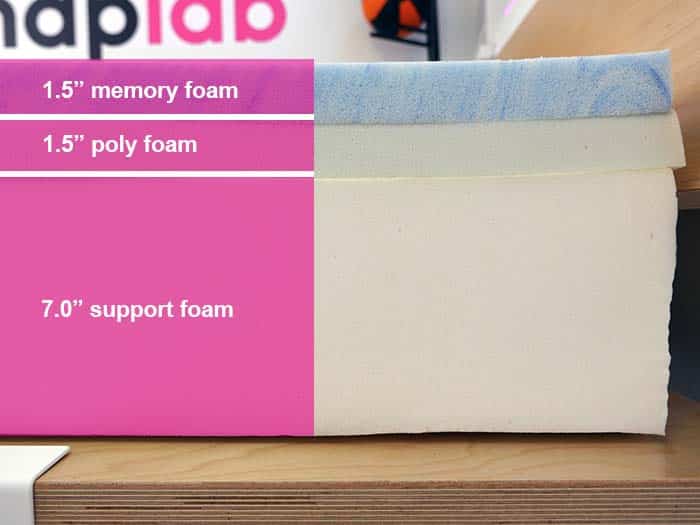
Combo foam mattresses use a blend of memory foam, latex foam, poly foam, and support foam. Using a combination of foams, these mattresses can generate a unique feel that isn’t 100% one material so it picks up on the pros of each material and balances out the cons.
Examples: Leesa, GhostBed, Nest Bedding Quail
If you’re looking for something that is more specifically one material, you may want to opt for a memory foam or latex foam mattress.
Memory Foam
Memory foam mattresses typically offer higher levels of hug and contour as well as a slower response time. Memory foam mattresses offer exceptionally good pressure relief and lot motion transfer, making them a good option for couples.

More traditional memory foam may be very slow to respond and sleep warmer. However, many modern memory foam formulations have solved many of the cons of memory foam. While a memory foam mattress may sleep warmer than a hybrid mattress, they are far cooler today than they were when they first hit the market.
Examples: Loom & Leaf, BedInABox, Nectar
Is all memory foam the same basic quality?
No. Memory foam comes in a wide variety of formulations and quality levels. Foam densities (typically measured in PCF, pounds per cubic foot) can be dramatically different. Higher densities will generally last longer, but may also cause the material to sleep warmer.
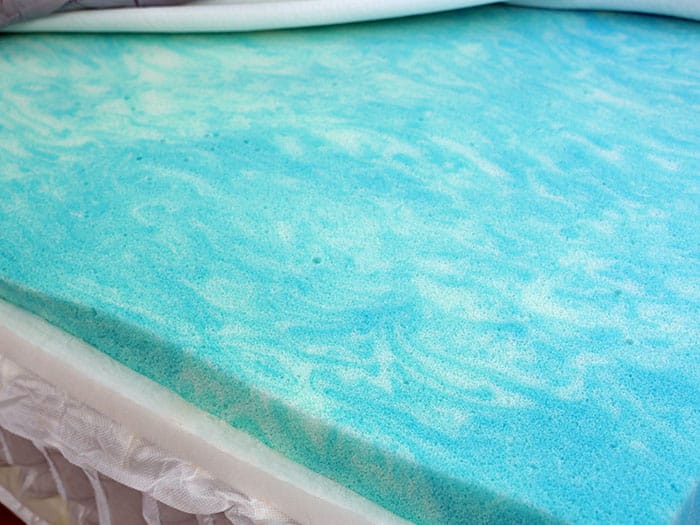
In addition, the quality of the raw materials going into the foam pour make a huge difference into the material quality. Lower quality memory foam may create permanent indentations more quickly, smell worse (and for longer), and sleep warmer.
Just because a mattress says it includes memory foam does not mean it’s a good memory foam.
Latex Foam
Latex foam mattresses can be made from natural latex or synethic latex. Natural latex comes in a liquid form and is extracted from rubber trees. Natural latex foam is more responsive than classic memory foam and offers higher levels of bounce and excellent cooling performance.
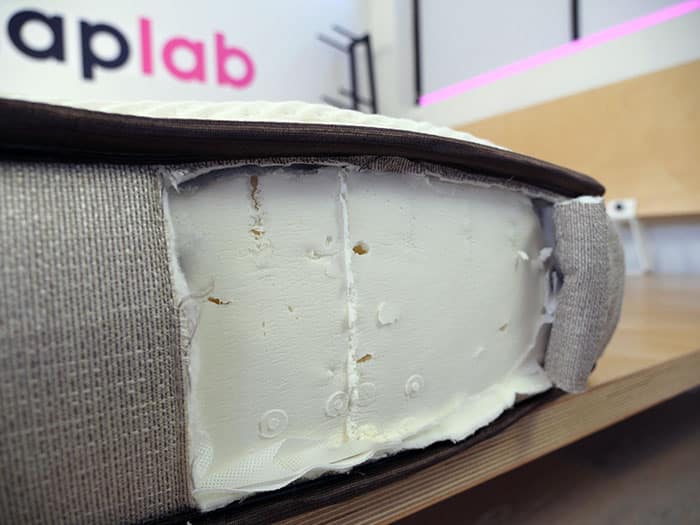
Natural latex is generally thought of as being more healthy, eco-friendly, and sustainable.
Examples: Nest Bedding Finch, Birch Luxe, Awara
Wondering how latex compares to memory foam? See our deep-dive Latex vs. Memory Foam guide.
Synthetic latex is also available, though it’s far less popular and widespread today than in previous years. Synthetic latex is typically made from a blend of latex and poly foam materials.
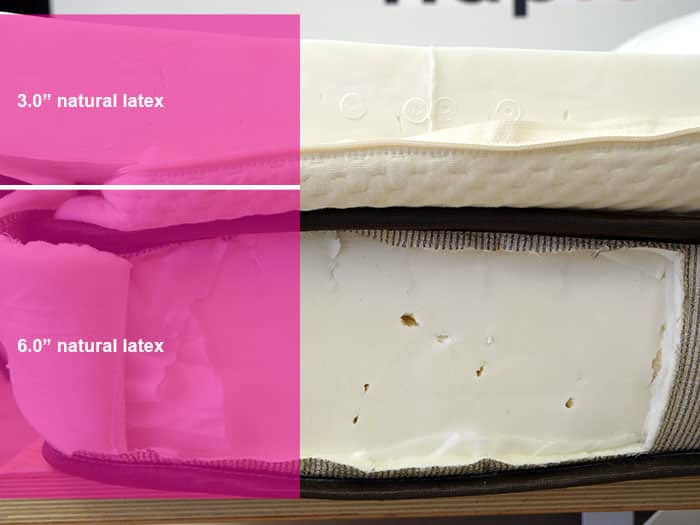
Lastly, be aware of latex-like foams. These types of foams are poly foams, though they are formulated and designed to offer the same benefits and feel as latex. They are not inherently inferior, but they are notably not natural latex.
Is all latex foam the same basic quality?
No. Latex foam, like memory foam, comes in a variety of quality levels and formulations. However, the quality variance is less than what we see from memory foam.
Latex foam is created with one of two basic processes, Dunlop and Talalay.

Dunlop latex is less expensive to produce, but also denser and generally more firm.
Talalay latex is more complex to manufacture but can be notably softer than Dunlop.
There are pros and cons to each type of latex. Each has its merits and cases where it is best utilized.
Poly Foam
The last major category of foam mattresses is poly foam. All memory foam mattresses are poly foam, but not all poly foam is memory foam.
What makes memory foam memory foam is its viscoelastic properties. When you see foam that isn’t described as memory foam or latex, then it’s highly probable that it’s a poly foam.

Poly foam is often used as the support layer for 100% foam mattresses. In addition, you’ll often see poly foam transitional support layers.
However, many mattress brands utilize poly foam within the comfort layer as well. Within the last decade, there has been an explosion of advanced poly foam formulations. These formulations give the foam unique and desirable properties while minimizing the negatives of more traditional foams like memory foam and latex.
Hybrids
Hybrid mattresses use a combination of foam with a more traditional coil base. These mattresses are good because they highlight the best parts of each material.

For example, foam mattresses sometimes struggle with poor edge support and heat retention. Coils-based mattresses can struggle with high levels of bounce and motion transfer.

Combining coils and foam, the resulting mattress typically has better edge support and better cooling (thank you coils), while also maintaining more restrained levels of bounce and limited motion transfer (thank you foam).
Examples: WinkBed, Leesa Hybrid, Helix Midnight Luxe, GhostBed Luxe
Coils
There are many different types of coil mattresses. However, the three most prominent sub-types include:
- Pocketed coils
- Coil-on-coil
- Innerspring
Pocketed coils is the most popular type, especially among higher performance mattresses. Each coil is wrapped in fabric (and sometimes foam) to create a more precise level of contour, lower motion transfer, and better support. You often see pocketed coil systems with hybrid mattresses or with thick pillow tops for comfort.

Coil-on-coil mattresses use only coils to provide comfort and support. These coils can be individually encased in fabric (pocketed) or connected together (innerspring). You’ll often see pillow tops or euro-style upholstered covers with these types of mattresses.

In the case of all 3 types of coil mattresses, the gauge of wire used for the coils, as well as height, and the number of coils all affect the overall comfort of the mattress.
When it comes to wire guage, the lower the number, the thicker the wire, and more pushback it will have.
More coils generally mean better pressure relief and support since the weight of the sleeper is more widely distributed amongst the entire mattress surface. However, as you get much over 1,000 coils per layer there is a noted diminishing return.
Example: Saatva
Specialty
This category kind of serves as a “catch-all” for varying mattresses that don’t fit into the above categories.
Specialty mattresses generally have a top layer of comfort material followed by a support base.

Example: Purple mattresses
These mattresses use a proprietary hyper-elastic polymer material. This liquid material is poured into an open-cell grid and creates a unique layer in all of the Purple mattresses.
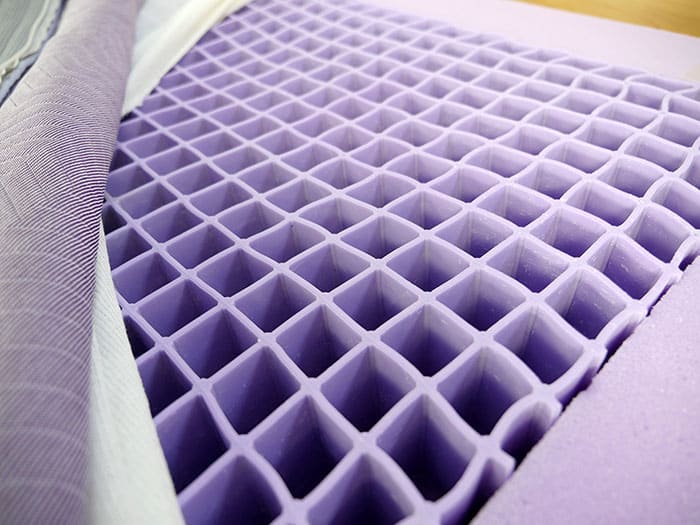
This material is not foam and not coils so it naturally falls into its own category of “specialty” design materials.
2. How old is your mattress?
Even if you already have the right type of mattress, the age of the mattress could be a contributing factor in why you’re not getting good rest.
As mattresses age, their materials that were once responsive, springy, and fresh can compress and create sagging or uncomfortable pressure points.
How long do mattresses last?
Mattress lifespan depends on a number of factors, but here is a rough span of how long you can expect each mattress to last, based on type.
- Innerspring: 5-8 years
- Memory Foam: 8-10 years
- Hybrid: 10-12 years
- Natural Latex: 10-15 years

Related: How to Dispose of a Mattress
This doesn’t mean your mattress won’t last longer. Depending on your usage, body weight, sleeping position, and material quality, mattresses can last longer than the above estimations.
Ultimately, as long as you are still sleeping well and waking up without pain then there is no need to change mattresses.
3. What is your budget?
Knowing how much you are willing to spend on a good mattress is an important part of deciding which mattress is best for you.
In almost all cases where a mattress is sold only in-store there are huge markups compared to similar online mattress options. There are just more overhead costs of a brick-and-mortar store, employees to run the store, and the cost of doing business (as they say).
All of this costs money and these dollars need to be paid by someone. In most cases, that is the customer. To skip these added costs, I urge consumers to shop online mattresses first before feeling boxed into a big-box sleep retailer.
Top Picks for Budget: mattresses under $1000 (queen-size)
Top Picks for Value: mattresses between $1000 – $1500 (queen-size)
Top Picks for Luxury: mattresses over $1500 (queen-size)
How much should you spend on a new mattress?
Avoid choosing a mattress that costs less than $800 for a Queen. Anything below that threshold and we start to see significant problems with longevity, material quality and build quality.
Also, avoid choosing a mattress that costs more than $2,500 for a Queen.
In the vast majority of cases, mattresses over that price are not offering improved quality, performance, or materials. You are simply paying for a fancy brand name.
The only exceptions to this price ceiling rule would be natural and organic mattresses, in addition to some high-end specialty mattresses. Even so, be careful to avoid over paying.
Big retailers have convinced much of the public that $5,000 for a mattress is perfectly reasonable, even when that mattress may only have $400-$700 in actual materials to create it.
4. What position do you sleep in?
Different sleepers have different positions and different positions oftentimes required different things from a mattress. We’re going to highlight three of the most popular sleeping positions and how the position affects your mattress.

Back Sleepers
Optimal Firmness: 5-8 out of 10 (where 10 is the most firm)
Back sleepers generally require a firmer mattress than others may prefer. Lying on your back, you need support along the entire length of your spine. Lack of support can cause back pain or neck pain, leading to years of discomfort and spinal misalignment.
How To: How to Sleep on Your Back
That being said, if the mattress is too firm, that can also cause painful pressure points. Your personal body weight can play a role in the ideal firmness.
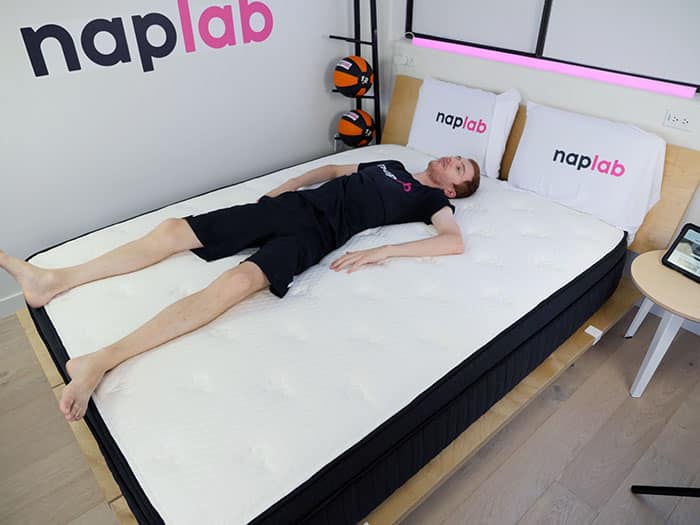
Lighter back sleepers may prefer something on the softer side of this range while heavier sleepers may prefer something on the firmer side.

Side Sleepers
Optimal Firmness: 4-6 out of 10 (where 10 is the most firm)
Side sleepers generally need something softer than back sleepers. When sleeping on your side, it is pretty typical to move around a bit more. Side sleepers can rotate during sleep, switching leg position (straight vs. bent) and even switching sides entirely.
How To: How to Sleep on Your Side
Softer mattresses are beneficial for side sleepers since they generally have more contour and hug. This helps the mattress to react to the varying pressure points that side sleepers have.
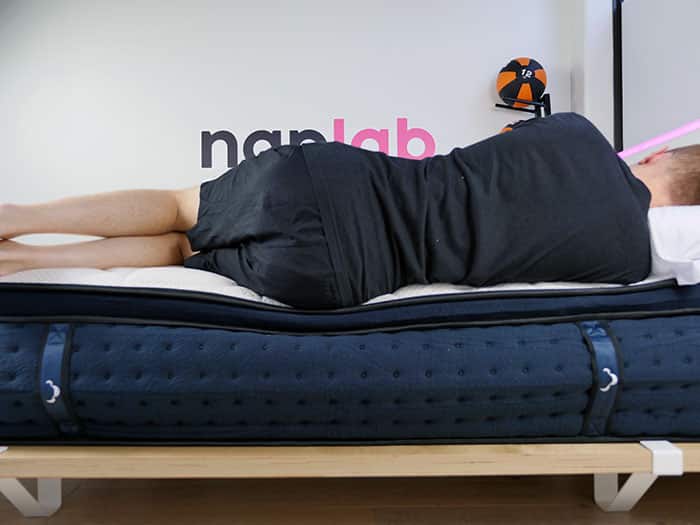
When you lie on your side, your back, hips, neck, and legs all generate a fastly different amount of pressure. The best mattress for side sleepers responds to these varying degrees of pressure and supports accordingly.
As with back sleepers, heavier weight side sleepers generally need a slightly firmer feel. While lighter-weight side sleepers tend to need a slightly softer feel.
Stomach
Ideal Firmness: 5-8 out of 10 (where 10 is the most firm)
Stomach sleepers generally need to be as flat as possible in order to be comfortable and avoid painful pressure points. Firmer mattresses provide better spinal alignment and prevent unwanted sag or sinkage.

Similar to other types of sleepers, lighter stomach sleepers may be able to get away with a softer mattress without sacrificing support—something like a 5 or 6 out of 10. But heavier stomach sleepers should consider a firmer mattress— like a 7-8 out of 10 for the best support.
5. How much do you weigh?
Weight is another factor you should consider when trying to choose the best mattress. The way a lightweight person (under 150 lbs.) engages with a mattress is far different from the way a heavier weighted person (over 300 lbs.) will engage with exactly the same materials.
One way we test this is by using a weighted vest in all of our performance tests.
Without Weighted Vest

With Weighted Vest

You can see from the images above show the contour of the mattress changes pretty drastically when more weight is added.
Some mattresses perform better than others when weight is added so this is definitely something you’ll want to consider before picking your mattress.
Plus Mattresses
There are a handful of mattresses specifically designed for plus-sized sleepers over 300 lbs. These mattresses offer thicker comfort layers and improved support that can withstand the extra weight.
Some of the best mattresses for plus-sized sleepers that we’ve tested to date include:
| Mattress | Type | Score | Check Price | Read Review |
|---|---|---|---|---|
| WinkBed Plus | Hybrid | 9.37 | Check Price | Read Review |
| Helix Plus | Hybrid | 9.29 | Check Price | Read Review |
| Titan Hybrid Luxe | Hybrid | 8.91 | Check Price | Read Review |
All of these mattresses listed here can support up to 1,000 lbs. so they are truly made to last against the extra weight.
6. What firmness do you need?
So you’ve answered all questions above, the last big question to consider is what firmness do you need?
Firmness is basically how the mattress feels when you lie down on it. A very firm mattress will generally have minimal sinkage when you lie on it and feel a bit hard.
On the opposite end of the spectrum, a very soft mattress will have deep levels of sinkage and feel very soft when you lie on it.
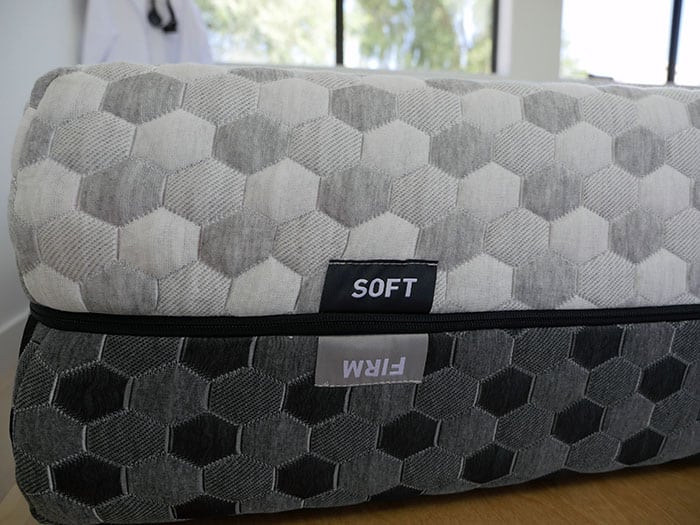
The tricky thing about assigning a number to firmness is that it is highly subjective. That being said, I have personally tested over 180 mattresses. All firmness levels are determined by comparing each mattress to one another so that all mattresses fit on a universal scale.
Our firmness scale goes from 1-10… with 10 being the firmest (like sleeping on a concrete floor) and 1 being the softest (like sleeping on a beanbag).
Here is a table that outlines our firmness levels and provides an example of a mattress that falls under that firmness.
| Firmness | Description | Mattress |
|---|---|---|
| 3 out of 10 | Extremely Soft | Helix Moonlight |
| 4 out of 10 | Very Soft | Brooklyn Bedding Aurora Hybrid |
| 5 out of 10 | Somewhat Soft | Nest Bedding Owl |
| 6 out of 10 | Moderate | Leesa |
| 7 out of 10 | Somewhat Firm | Birch |
| 8 out of 10 | Very Firm | Loom & Leaf – firm |
| 9 out of 10 | Extremely Firm | Plank |
To help determine what firmness is right for you, you’ll need to consider your weight and sleeping position.
The table below helps to provide a rough range of where your ideal firmness might be, based on sleeping position preference and total body weight. If you sleep with a partner, you may need to consider their needs and preferences as well.
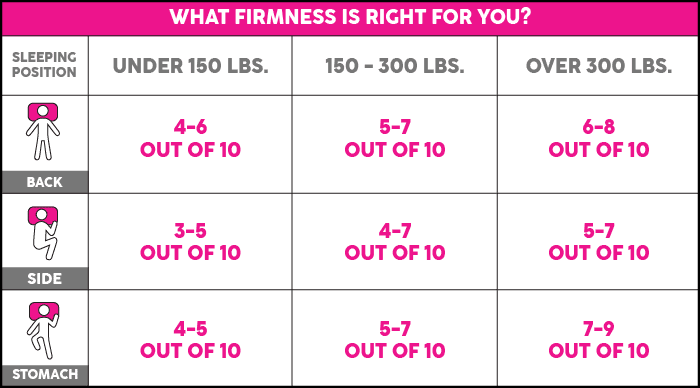
What if you and your partner can’t agree?
Relationships are all about compromise, but picking a mattress feels very different than picking a place to eat for dinner. It can be hard to compromise when good sleep is at stake.
If you and your partner want very different things in a mattress, you may want to consider a split mattress that allows each of you to have the ideal mattress.

You can consider a split king configuration, which is essentially two Twin XL mattresses used side-by-side.
Summary
Okay, so let’s hit the highlights one more time. Below is a list of the 6 most important questions to ask yourself when choosing a new mattress.
1. What type of mattress do you need?
There are four main different types of mattress—foam, coil, hybrid, or specialty. Understanding the differences between the mattress types is the first step in choosing the best mattress for your needs.
2. How old is your mattress?
If you’re considering replacing an old mattress, how old is that mattress? Maybe it’s a foam mattress and used to be good, but it was a hand-me-down that is 20 years old. Even though foam mattresses may work for you, this particular one is old and unsupportive. Knowing how long mattress materials last is another important step in choosing a mattress.
3. What is your budget?
Varying budgets can greatly impact the pool of mattresses that you have to pick from. But that being said, a good mattress doesn’t have to be expensive. We have tested many mattresses that are less than $1000 (queen) that are wonderfully supportive and very comfortable. Luxury mattresses offer things like advanced cooling, better materials, improved build quality, and better support.
4. What position do you sleep in?
Side sleepers, back sleepers, and stomach sleepers all have very different needs. Your sleeping position can say a lot about the type of mattress that you would be best suited for.
5. What much do you weigh?
Bodyweight is another important factor in choosing the best mattress. Lightweight sleepers (under 150 lbs.) have very different needs than heavier weight sleepers (over 300 lbs.). Thin covers vs. plush covers, comfort layer thickness, and support layer thickness are all really important considerations that may vary based on your weight.
6. What firmness do you need?
Mattress firmness should directly relate to your personal weight and sleeping position. See the chart below as a guide.

Well, folks, that’s a wrap! If you still aren’t sure how to pick the best mattress for you, please reach out! We offer custom personalized mattress recommendations where we ask a couple of quick questions and then use that information to give you some great options, based on your needs.



